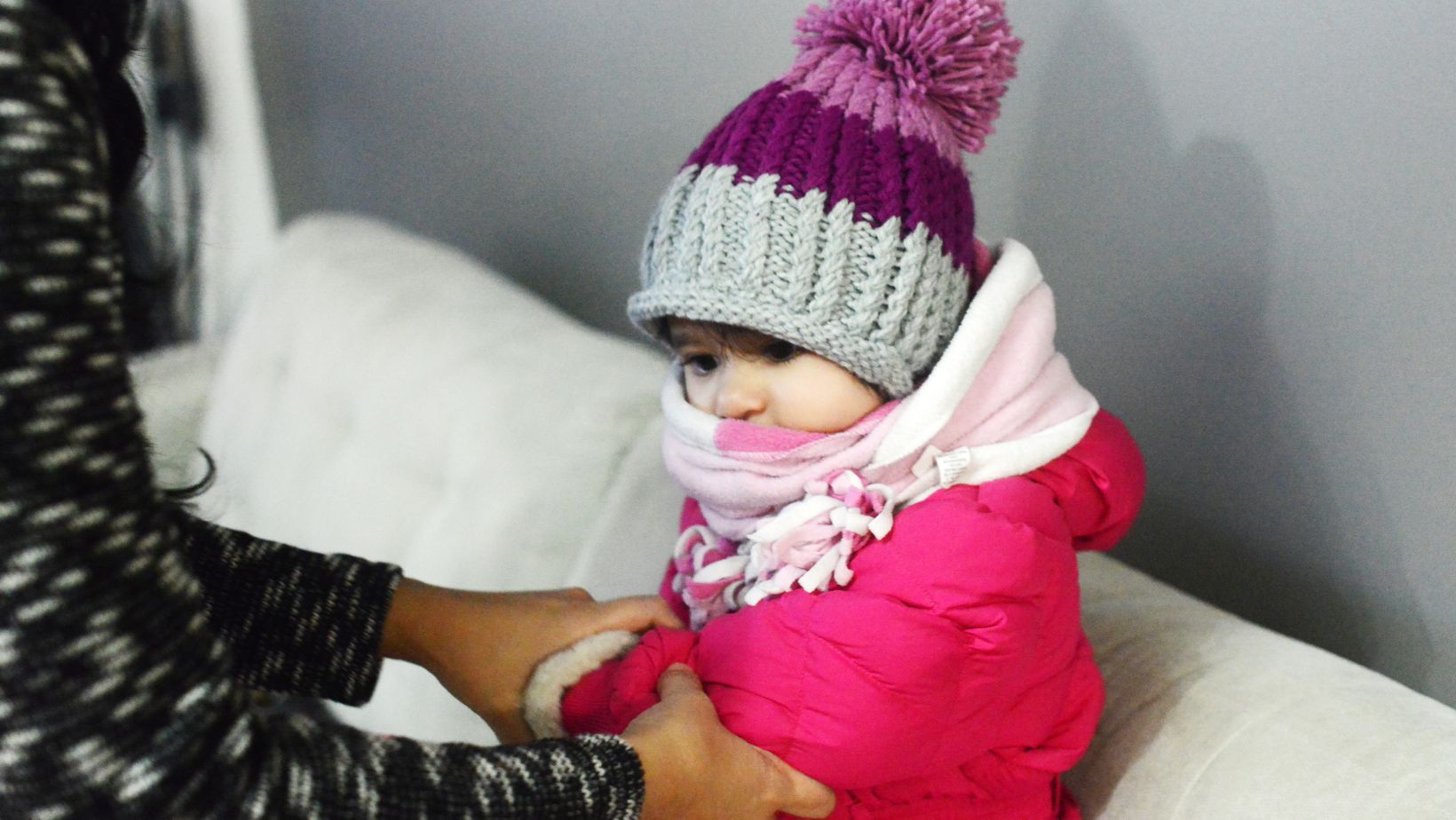The most notable style is the winter season when the most beating weather arrives. Thus the demand for warm garments for keeping our little ones snug outdoors is availed. However, winter toddler clothes do take a lot of worlds, snow, mud and spills and thus proper care is highly recommended. Not only do these garments have a better chance surviving for long, but also your toddler will always use them warm and comfortable. In the following guidelines we will present specific ways in which you can wash, dry, put away for storage and care for your child’s winter wears in order to protect their clothes and looks stylish throughout the period under review.
Washing Winter Toddler Clothes
Washing winter toddler clothes is very important, and so is making sure they do it right this time.
- Reading Care Labels: Reading On clothing care labels of your child’s garment is always advised at the initial stage. These labels include care instruction that can help you in how to wash the fabric so that a nice treasured piece doesn’t smell odd again.
- The Suitable Detergent: Use mild, baby-safe detergents with no harmful chemicals and scents.Those countries where stature laws are enacted, are however suitable for removal of odors without a detergent. Such stains anyway are off normal for the skin of babies so it is better to be safe than sorry.
Washing Method:
- Hand-wash vs. Machine-wash: For how to wash fleece and down jackets, hand-wash is preferable. However, washing machine is alright for most durable toddler’s winter garments.
- Washing In Cold Water: If winter clothes are to be washed, a washing machine or the tub must be used with cold water only. This indeed saves the fabric from being shrunken or colour of the fabric being lost.
- Separate Colors: Color bleeding can be avoided by putting winter clothes in their respective color load. For baby winter clothes, braiding this one simple step may help with vivid winter clothing.
Drying Techniques
Because washing and drying processes are both well coordinated, a proper technique for drying clothing must be employed equally as much for that of washing and moistening them.
- Air-Drying: Where possible, winter clothes should not be dried in a tumbler, rather air-dry them over a line or flat. This is less harsh on the fabric and helps preserve its shape and warmth.
- Avoiding Heat: One has to be very careful about the use of the dryer. High heat means shinking, loss of insulation in the jacket/coat. If a tumble dryer is used, be set at lowest heat until the clothes are slightly damp before you take them out and leave udoscidad os for air-drying.
- Drying Accessories: For accessories like hats, mittens, and scarves, drying these on air is the safest for their design. Spread flat on a towel or hang to dry them completely and avoid molding them out of shape.
Storing Winter Toddler Clothes
After winter getting over, the manner in which you keep your toddler’s winter clothes for the next year may affect so much how they look like next year.

- Seasonal Storage: The end of the winter season brings all those winter apparels and the need to stock them. Locate a cool and dry area to store them and shield them from the sun in order to avoid obscure discoloration or deterioration.
- Cleaning Before Storage: Prior to putting away the garments; it is advisable to clean and dry them properly. Mold growth will be inhibited as well as it helps in unsetting any dirt for a long period.
- Organizing: Do try to put clothes in a sorting box or vacuum bag, when clothes are in good order inside a bag and box, it will ensure it stays in a good condition. Tag the boxes in winter clothes, for instance, for winter season so that whenever it comes, you will be able to access what you need with ease.
The Fabric Quality Assurance
Keeping toddler’s winter clothing is not only as easy as washing and packing, but maintaining what the clothing made of as well.
- Pilling and Fraying: Through checking clothing drafts, pilling may be controlled in this direction. Also in most cases they appear when clothes are already worn, then use a fabric shaver to smooth it out. Blast your boundaries as thighs are frayed, cut away all too much so it’s a smooth edge going up.
- Spot Cleaning: For stains, do them as they occur. If it’s a small stain, a damp cloth or some stain remover can be used directly on it. Whenever it is possible, spot cleaning can save one from daily laundry washes which would be detrimental to the life of the clothing.
Repairing Damaged Clothing
No matter how hard one tries, disasters do strike. However, even small nicks and cuts can be attended to and this can help prevent one from spending much more replacing the clothes of the little one.
- Simple Repairs: There is no need for feigned terror just because a button pops out or a seam comes apart. A button can be replaced, and holes can be closed with simple stitching using a sewing needle. The ability to sew even the most basic of garments can keep clothes in circulation for quite some time.
- When to Seek Professional Help: If the problem you are dealing with is relatively large, suggestions would be to seek the assistance of a tailor or a known dry cleaner and leave the item with them. They can perform all the repairs that require extra knowledge and skill and therefore baby clothes are returned to their best state possible.
Conclusion
The winter wear for a toddler can be managed effectively without much fuss. There are a few basic rules of washing, drying, storing, and caring of winter clothes that will help to keep your child looking fashionable and warm throughout the winter season. Remember, with some care, these clothes can be preserved so that you do not have to worry about all the fun winter activities that lie ahead!
FAQs: Winter Toddler Clothes Care Tips: Questions and Answers
How do I get winter toddler clothes stains out?
If there are stains, the first rule is to mop up the area that is affected with a damp cloth or raced with water; do it as soon as possible before the stains settle down or hardly get removed. Treat the stain with a gentle cleaner or put a dab of mild soap mixed in water on it.

For tough stains, you could use a soft brush to gently scrub the stain spot. It is a good idea to do a patch test if the shirt has any worry concerning the use of any cleaning fluids.
I’d like to know if I can wash all winter toddler clothes in the machine.
Most of the toddler winter wear clothing is washable in a washing machine but it is advisable to look for the care labels first. Gentle cycle or hand wash towels or down jackets and other soft fabric often need to be hand-washed. But, cold water should always be used in the washing machine to save the fabric quality and prevent the clothes from being shrunk.
What steps can I take to avoid overwear and distortion of my toddler’s winter clothes?
It is advisable to air-dry clothing instead of tumble-drying to preserve the shape of the garment. If tumble-drying, use the lowest temperature and do not completely dry items; leave them slightly damp for air drying. Moreover, always observe the instructions on the recommended loads, levels to avoid excess stretching and wear of the fabric.
What is the most appropriate tactic for keeping children’s winter clothes off season?
Washing and drying winter clothes properly, every fabric is important, as those will prevent mildew from developing upon the fabric. Keep bins/bin covers/bags in dryer or vacuum zip pouches where water and insects cannot penetrate in. Remember storage with lots of them, is best away in a cool, dry zone and not exposed to sunlight, maybe writing on the container denoting what it notes would help prevent opening wasted containers when the winter seasons comes back again.

























